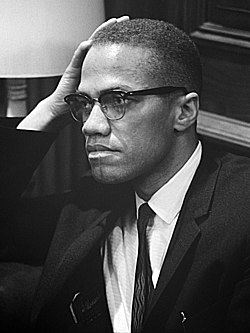Political figures

Being born in Omaha doesn't make me an American any more than being born in an oven makes a cat a biscuit. - Malcolm X
- John Adams, Jr., first African American elected to the Nebraska Legislature after it became a unicameral, Nebraska State Senator
- Ernie Chambers, Nebraska State Senator, historical North Omaha community leader
- Brenda Council, city councilmember
- Lowen Kruse, Nebraska State Senator
- Malcolm X, civil rights leader
- George Wells Parker, founder of Hamitic League of the World
- John Grant Pegg, Weights and Measure Inspector, 1910–1916, Omaha [1]
- Dr. Matthew Ricketts, first African American elected to the Nebraska Legislature, Nebraska State Senator
- Silas Robbins, first African American lawyer in Omaha
- Joe Rogers, Colorado Lieutenant Governor, 1999-2003 (Republican)
- Standing Bear, imprisoned and tried at Fort Omaha in Standing Bear v. Crook
- Susette LaFlesche Tibbles, Ponca member associated with the Standing Bear v. Crook trial
- Thomas Tibbles, journalist associated with the Standing Bear v. Crook trial
- Whitney Young, former head of Omaha Urban League
- Aaron Manasses McMillan, Nebraska State Senator, founder of the Peoples Hospital in North Omaha
- Gladys Harrison, primary candidate for the U.S. House of Representatives

